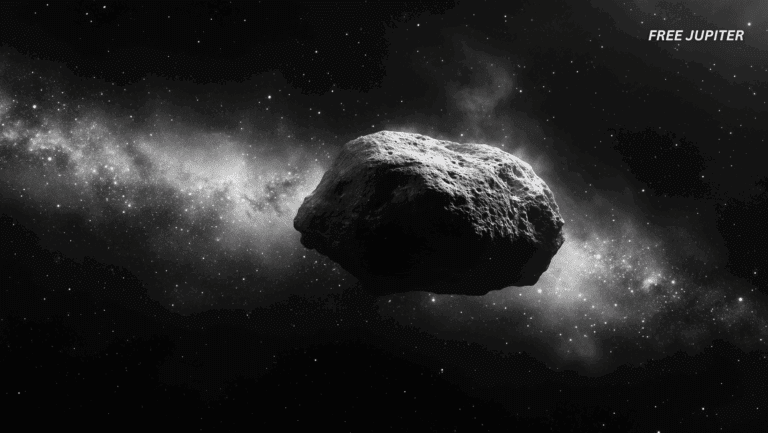Imagine trying to photograph a raging bonfire without getting burned. Now, replace that bonfire with the Sun—a glowing sphere of gas so massive it could fit over a million Earths inside—and you’ve got NASA’s Parker Solar Probe on a record-breaking mission unlike any other. Late last year, the spacecraft achieved something no machine has ever done before: it captured the closest images of our star’s outer atmosphere, bringing humanity eye-to-eye with the origin of solar weather.
And no, it didn’t melt. In fact, it thrived.
This daring journey through the Sun’s blazing outer layers is giving scientists front-row access to the mechanisms that power solar winds and storms—phenomena that may sound distant and exotic but can actually knock out satellites, scramble GPS systems, and even disable power grids on Earth. So, while it may sound like space business, this is very much our business, too.
A Solar Safari Begins: Flying Through Fire
On December 24, 2024, while many of us were sipping hot cocoa, the Parker Solar Probe was making its closest-ever approach to the Sun—just 3.8 million miles away from its fiery surface. That’s about one-tenth the distance from the Sun to Mercury and more than seven times closer than any spacecraft has dared to go.
Instead of simply admiring the Sun from afar like previous missions, Parker plunged directly into its corona—the Sun’s superheated, outermost atmosphere. Temperatures in this region soar into the millions of degrees, and yet, Parker’s sturdy heat shield allowed it to safely navigate and observe this volatile environment.
During this solar safari, Parker captured groundbreaking data with the help of an instrument called WISPR (short for Wide-Field Imager for Solar Probe). Think of WISPR as Parker’s high-powered sunglasses, snapping detailed images of solar activity that were once only possible in computer models.
The Solar Wind: Not Just a Gentle Breeze
One of the most important things Parker is helping us understand is the solar wind—a constant stream of charged particles flowing from the Sun. At Earth, this wind is fairly gentle, but closer to the source, it’s more like a turbulent river of invisible energy, shaping everything from planetary atmospheres to cosmic weather patterns.
This flow of particles plays a starring role in space weather. It powers stunning auroras near Earth’s poles, but it can also become a bit of a villain. When charged particles collide with Earth’s magnetic field, they can create powerful geomagnetic storms that disrupt navigation systems, endanger astronauts, and damage satellites.
Understanding where these particles come from and how they behave could be the key to better protecting modern technology from unexpected solar outbursts.
Stunning Solar Snapshots and Clashing Solar Storms
Thanks to WISPR, we now have some of the clearest views yet of what happens just after solar wind bursts out of the Sun. One key discovery: the heliospheric current sheet, an invisible boundary where the Sun’s magnetic field flips direction, kind of like a cosmic zipper dividing the north and south. This area plays a major role in shaping how the solar wind spreads through the solar system.
And then there are the CMEs, or coronal mass ejections—massive explosions of plasma and magnetic field from the Sun. Parker captured high-resolution footage of several CMEs colliding with each other. That’s right—space weather isn’t just particles flying around; it can be chaotic, with shockwaves crashing together like waves in a stormy ocean.
When these CMEs merge, they can become more intense, faster-moving, and harder to predict. This makes them more hazardous to astronauts and to systems on Earth, such as communication networks and power infrastructure. By witnessing these pileups firsthand, Parker is giving us crucial clues to improve space weather forecasts.
Reviving a 1950s Theory with a 21st Century Probe
Back in 1958, astrophysicist Eugene Parker theorized the existence of the solar wind. At the time, his ideas were met with skepticism. Fast forward over 60 years, and not only was he proven right—NASA even named a spacecraft after him. Before Parker Solar Probe launched in 2018, spacecraft like Mariner 2 and Ulysses helped us study the Sun from a safe distance. But Parker is flying through the real action.
And the deeper it goes, the weirder things get.
In one pass around 14.7 million miles from the Sun, Parker detected something unexpected—twists and kinks in the Sun’s magnetic field called switchbacks. These are rapid flips in direction, like sudden bends in a road. They weren’t supposed to be common—but Parker found them popping up frequently and in clumps.
In 2021, Parker even made its first daring dive into the corona. What it found was surprising: the corona isn’t smooth and uniform. It’s ragged, patchy, and complex—more like a lava lamp than a solid balloon. These uneven regions appear to be where the Sun’s energy surges out and escapes into space.
Even more intriguingly, in 2024 scientists determined that the fast-moving solar wind is partly driven by these switchbacks. It’s as though the Sun’s magnetic field throws sudden punches of energy, flinging solar particles outward at incredible speed.
Read more: Astronomers Detect The Most Powerful Explosions in the Universe Since the Big Bang
Cracking the Code of the Slow Solar Wind
Not all solar wind is speedy. In fact, there’s a sluggish variety known as the slow solar wind, which moves at roughly half the speed of its faster cousin (about 220 miles per second). While slower, it’s more turbulent, unpredictable, and dense—traits that make it a wildcard when it comes to space weather.
Before Parker, we had limited understanding of this slow wind. Scientists suspected there might be two different types based on their magnetic signatures:
- Alfvénic slow wind, which has small-scale magnetic switchbacks.
- Non-Alfvénic slow wind, which flows in a smoother, more steady pattern.
Now, thanks to Parker’s up-close passes, we know both types exist—and we’re beginning to learn where they originate. One theory suggests that the non-Alfvénic wind comes from regions called helmet streamers—giant magnetic loops often seen during solar eclipses. These streamers connect active regions on the Sun and may release particles into space when they become unstable.
On the other hand, Alfvénic wind seems to be linked to coronal holes—cooler, darker regions in the Sun’s outer layer where the magnetic field opens up, allowing particles to escape more freely.
Understanding where the slow solar wind begins and how it behaves is critical because its interactions with the fast wind can lead to storms strong enough to rival even explosive CMEs.
What Comes Next: Parker’s Continuing Quest
Parker Solar Probe isn’t finished. Its journey is far from over. The next close encounter with the Sun is set for September 15, 2025, when it will again plunge into the corona to collect even more data.
Each orbit brings it closer, each measurement sharper, and each image more revealing.
“We’re not quite there yet in terms of solving every mystery,” said Adam Szabo, one of the mission’s lead scientists. “But we’ve got a treasure trove of new data, and it’s changing the game.”
This little spacecraft, zooming through space at over 400,000 miles per hour, is helping humanity solve riddles as old as time itself. The secrets of the solar wind, the formation of space weather, and the true nature of our star are now within reach—thanks to Parker’s bravery and a whole lot of solar sunscreen.
Read more: Breakthrough Study Suggests That Aliens Might Be Living in Parallel Universes
Why It Matters—Even If You’re Not an Astronomer
You might be wondering: why should I care about solar wind or magnetic switchbacks?
Here’s the deal: the Sun affects Earth in more ways than just sunlight and warmth. Its bursts of energy can interrupt communication satellites, interfere with aviation, mess with GPS systems, and even cause blackouts in our power grids. And as we prepare for more crewed missions to the Moon and eventually Mars, understanding space weather becomes even more important for astronaut safety.
With each new discovery, Parker Solar Probe isn’t just revealing the Sun’s secrets—it’s helping us protect life and technology here on Earth and throughout the solar system.
So next time you glance up at the Sun, remember: 93 million miles away, a tiny, heat-shielded spacecraft is dancing with solar fire, peeling back layers of mystery from the heart of our solar system.










